- JST Home
- /
- Strategic Basic Research Programs
- /
 PRESTO
PRESTO- /
- project/
- R&D Process Innovation by AI and Robotics: Technical Foundations and Practical Applications/
- [R&D Process Innovation] Year Started : 2024
[R&D Process Innovation] Year Started : 2024
Yuki Asano
Robot system infrastructure for autonomous-driven science
Grant No.:JPMJPR24T1
Researcher
Yuki Asano
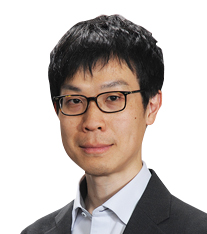
Project lecturer
Graduate School of Engineering
The University of Tokyo
Outline
To realize a robot system infrastructure for autonomous-driven science, research and development will be carried out focusing on the implementation of a lab-automation system that integrates robots, experimental equipment, and AI tools. In addition, practical system operation will be proceeded in automation tasks in application fields in parallel to the system development. Utilizing the knowledge and experience in the robotics field, the formation of an ecosystem will also be aimed including the building of a research community where scientific experiment, AI, and robot researchers can work together.
Yuko Kuroki
Dynamic Environment Analysis and Its Applications Using Sequential Learning Theory and Graph Mining Techniques
Grant No.:JPMJPR24T2
Researcher
Yuko Kuroki

Research Scientist
CENTAI Institute S.p .A.
Outline
Graph mining is a technique for extracting useful patterns and knowledge from data with graph structures, such as networks that appear in the real world. This research aims to establish the foundations of sequential learning theories and algorithms that contribute to the development of graph mining techniques under uncertainty. We seek to establish a foundation for advanced decision-making in dynamic environments and to further the efficiency of research and development processes represented by graph structures, thereby advancing data-driven research.
Sho Sakaino
Highly Reproducible Motion Generation Model through Integration of Control and Learning
Grant No.:JPMJPR24T3
Researcher
Sho Sakaino
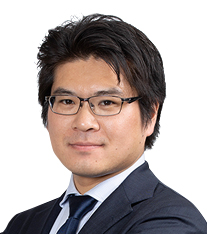
Associate Professor
Institute of Systems and Information Engineering
University of Tsukuba
Outline
First, we develop an imitation learning model for a non-Markov process to reproduce skilled actions that require prediction of future responses. Then, by constructing a feedback control for a non-Markov process, a stable and highly accurate control system can be realized in imitation learning. This is achieved by separating and designing the motion generation model into systems with Markov property and non-Markov property parts. The integration with control is expected to greatly improve the reproducibility of imitation learning. In addition, bilateral control in the workspace is realized by considering singularities, so that imitation learning can be implemented on a variety of robots. Finally, we will collaborate with AI researchers to automate scientific experiments.
Kanata Suzuki
Development of a robot continual learning method that integrates language and sensorimotor information
Grant No.:JPMJPR24T4
Researcher
Kanata Suzuki

Principal Researcher
Artificial Intelligence Laboratory
Fujitsu Limited
Outline
The current foundation model is not easily applicable to various robot tasks due to the lack of arbitrariness caused by learning only from offline data and increased learning costs due to large weight parameters. This project aims to create a continuous learning method that connects large language models with multiple robot motion models. This will enable the combination of robot motion models built in multiple environments and tasks.
Lauren Takahashi
Development of Heterogeneous Gas Flow Catalysts Evaluation Robot
Grant No.:JPMJPR24T5
Researcher
Lauren Takahashi

Assistant Professor
Faculty of Science
Hokkaido University
Outline
This project aims to develop the world’s first autonomous gas-distribution heterogeneous catalyst evaluation robot system. This system includes 3D printer parts, a catalyst evaluation system (using a flow microreactor), gas lines, electronic boards, control software, data science methods, and database development and are all completely self-made in order to develop a low-cost and highly versatile system. The target reaction is methane production by CO2 hydrogenation, and the objective is to develop a carbon resource recycling technology. This proposal will contribute to the spread of robotic catalyst development in Japan.
Naoya Takeishi
Hybrid Modeling for the Symbiosis of AI and Human Sciences
Grant No.:JPMJPR24T6
Researcher
Naoya Takeishi
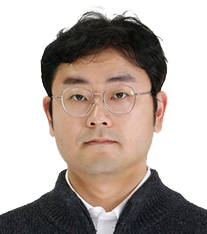
Lecturer
School of Engineering
The University of Tokyo
Outline
The combination of machine learning and scientific mathematical models is expected to improve predictions and their reliability. For such hybrid modeling, technical issues remain, such as learning methods to maximize the use of scientific knowledge. This project aims to address these issues so that hybrid models can be widely used in research and development. It will also address the fundamental question of how hybrid models can be accepted as scientific knowledge through practices of applying hybrid models.
Ryo Tachibana
Development of the small molecule transport system based on the interactive causal exploration method
Grant No.:JPMJPR24T7
Researcher
Ryo Tachibana
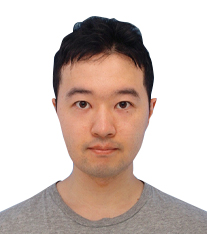
Assistant professor
Graduate School of Pharmaceutical Sciences
The University of Tokyo
Outline
While data analysis in the life science and medical fields is increasing with the evolution of AI technology, its application to experimental medical research, where large-scale data cannot be prepared, remains a challenging task. This project incorporates the expertise of scientists into machine learning systems and refines scientifically understandable AI by repeating an interactive cycle in which scientists conduct experiments to verify the causal models proposed by the AI. This new approach to the simultaneous promotion of medical technology development and basic research will be demonstrated on the subject of the development of small molecule transport systems.
Ryo Tamura
Development of supoort software for autonomous automated materials exlolations
Grant No.:JPMJPR24T8
Researcher
Ryo Tamura

Team Leader
Center for Basic Research on Materials
National Institute for Materials Science
Outline
I will develop a software to easily connect AI and robotic experiments and to realize autonomous automated research. The software will be released as open source software. By treating AI and robotic experiments as modules, I will build a system that can conduct autonomous automated research in various combinations. I aim to develop software that can meet a wide range of research needs, including materials exploration.
Masashi Hamaya
Learning Experimental Tasks in Human-Shared Environments using Soft Robots and Tactile Sensing
Grant No.:JPMJPR24T9
Researcher
Masashi Hamaya

Principal Investigator/Research Organizer
Research Administrative Division
OMRON SINIC X Corporation
Outline
This project envisions a future where robots autonomously perform various experimental tasks in environments shared with humans. The project aims to achieve powder grinding, powder weighing, and pipette manipulation in uncertain and unfamiliar environments. This will be accomplished by developing a robot learning framework that enables robots to safely interact with environments through physical softness and detect task-related cues and potential hazards using tactile sensing.
Shuto Hayashi
Autonomous protein design through rapid DBTL cycles
Grant No.:JPMJPR24TA
Researcher
Shuto Hayashi

Associate Professor
Institute of Integrated Research
Institute of Science Tokyo
Outline
In fields such as drug discovery and materials science, there is a demand for the development of high-performance proteins that surpass those found in nature, as well as new functional proteins that do not exist in nature. Conventional protein design has been based on specialized knowledge and experience, limited by human cognitive abilities and workforce. Therefore, in this project, I will develop a fully autonomous protein design platform that does not require human intervention by integrating AI and robots.
Takashi Matsubara
Foundation of Scientific Machine Learning by Geometric Deep Learning
Grant No.:JPMJPR24TB
Researcher
Takashi Matsubara
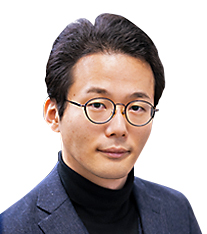
Professor
Graduate School of Information Science and Technology
Hokkaido University
Outline
By integrating model-driven approaches with deep learning, this project aims to establish a technical foundation that facilitates the data-driven discovery of physical laws and characteristics of dynamical systems, enabling the autonomous construction of mathematical models that ensure these properties. This foundation will enable fast and accurate computer simulations, accelerating the research and development cycle that relies on such simulations. To achieve this, the project will advance both the theoretical and practical aspects of geometric deep learning and scientific machine learning.
Koichiro Yoshino
Research on Natural Language Processing Formalizing Tacit Knowledge in Research and Development
Grant No.:JPMJPR24TC
Researcher
Koichiro Yoshino

Associate Professor
School of Computing
Institute of Science Tokyo
Outline
This project builds an AI system that records the research and development (R&D) process and verbalizes tacit knowledge into explicit knowledge by outputting the main points of the process into language. We realize a natural language processing system that uses various multimodal information and handles the granularity of various actions in such R&D processes. We also build a high-quality, linguistically annotated multimodal database of R&D processes during this research project.













